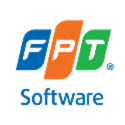Driving the Future: Innovation Lessons from Software-Defined VehiclesDriving the Future: Innovation Lessons from Software-Defined Vehicles
While engine design, tires, and innovative use of materials are still as important as ever in building a high-quality car, automotive manufacturers now operate in a competitive landscape where software truly decides success in the market. This is the era of the software-defined vehicle. (SPONSORED)
May 23, 2023

(SPONSORED ARTICLE)
It may be true that the Silicon Valley innovators are the ones who get the most press about their software engineering prowess. But over the last two decades, the car manufacturing world has quietly established itself as a software development juggernaut in its own right. The modern vehicle now runs on hundreds of millions of lines of code, and analysts agree that we're now entering the era of the software-defined vehicle. Gartner predicts that by 2029, software-defined vehicles will surpass 90% of total unit production*.
The evolution of very traditional auto manufacturers into software-driven innovators has been a process that's actually been decades in the making. But over the last several years especially, car original equipment manufacturers (OEM) and their suppliers have steered into faster improvements by learning four lessons universal to any company that builds its value proposition around the software:
An Open Architecture Is Just a Start
Open architectures are known by many to be the foundation of success in industries that depend on collaborative technology ecosystems, which require lots of vendors to create software that integrates cleanly into a broader system. This is just as true for the automotive world as any other. The lynchpin to so much of the progression of the software-defined vehicle is an open standard called AUTomotive Open System ARchitecture (AUTOSAR).
This year marks the 20th anniversary of AUTOSAR, which is maintained by a coalition of major car OEMs. It's a standardized software framework and system architecture that defines the architecture and interfaces of different components in the vehicle software stack and defines a methodology for all of them to interoperate. An open architecture like this ensures everyone is generally working on the same page as they innovate.
But the big lesson learned by car manufacturers is that an open architectural framework is just the starting point for software innovation across an industry. It takes a lot of other factors to ensure success.
Platformization and Development Pipelines are Key
Even with the guidance provided by the AUTOSAR framework, many automotive manufacturers struggle with the same kind of innovation pitfalls that any software development organization can fall into. When organizations are creating a lot of interoperable software, siloed, or ad hoc development process and segmented development tools are the enemy. Orchestrating innovative software development at scale requires a regimented software factory in the same way that putting car parts together needs a well-planned assembly line.
Continuous testing (CT) build pipeline based on well-designed platforms provides the infrastructure for that software factory. FPT Software delivers that platformized approach with its proprietary MaaZ solution, which converges production-ready platforms and seamlessly integrated toolchains that make it possible to rapidly speed up development. Platformization and pipelines can make all the difference for many manufacturers in delivering innovation. For example, one big four car manufacturer FPT Software worked with wanted to improve the way they delivered on a new initiative to move to Android Automotive. With the MaaZ platform, they sped up their delivery by 60% over the previous method that leaned on another supplier's siloed processes.
Hybrid and Offshore Workforce Models Matter
Software talent skills gaps are a real concern in sustaining a company's innovation efforts. One Swedish car manufacturer that FPT Software has been working with needed to start up a new safety and security development implementation that would meet market needs for several components that would implement cybersecurity controls and secure in-vehicle communication. The manufacturer needed a task force to take this project on, but talent shortages and a large scope of work were challenging the manufacturer to take care of this project in a timely, cost-efficient, and quality way. The manufacturer was able to achieve that by leaning on a core offshore team of 10 engineers that was formed to take on the core system and security project -- saving 70% in the process while delivering recurrent software releases every two months.
Don't Pit Quality Against Speed
Finally, one of the other key innovation lessons learned in the era of the software-defined vehicle is that no development organization can afford to pit quality against speed. There's no choosing between one or the other -- whether producing web apps or car apps. This is, again, why CT pipelines are so crucial. FPT Software's work with a Korean car OEM shows how this plays out. Through MaaZ, a Korean car OEM depends on Jenkins automation to run its early bug detection on software builds. Doing so allowed the firm to bolster the ASPICE safety security levels for 76 modules within 12 months. Along the way, the CT pipeline helped reduce 90% of the required workload for development and integration.
These four lessons have helped manufacturers push the bounds of what it means to make a high-performance vehicle. While the implementations are specific to the automotive world, the lessons are universal.
(*) Gartner’s Forecast Analysis: Automotive Semiconductors, Worldwide, 2021-2031, by Masatsune Yamaji
You May Also Like





